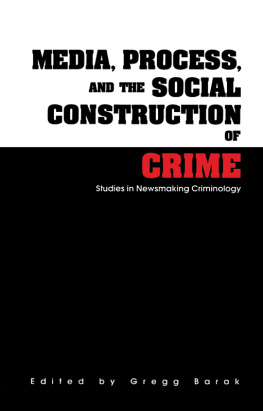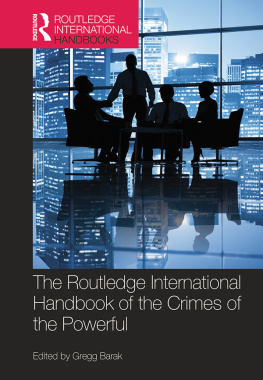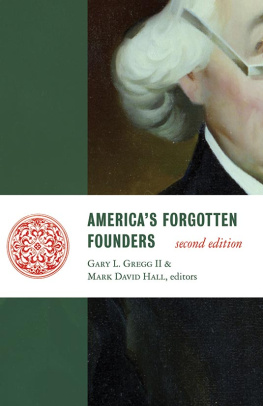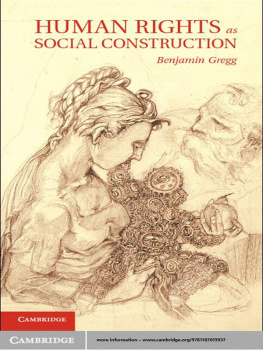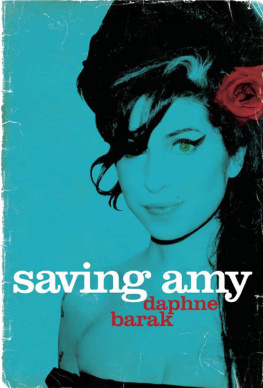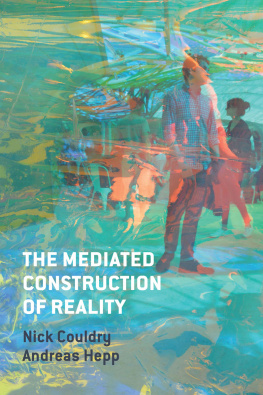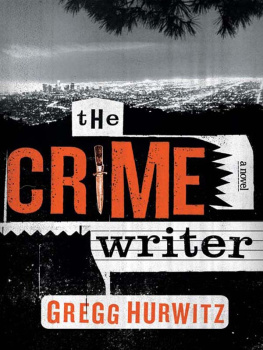C URRENT I SSUES IN C RIMINAL J USTICE
(V OL . 10)
MEDIA, PROCESS, AND THE SOCIAL CONSTRUCTION OF CRIME
GARLAND REFERENCE LIBRARY OF THE HUMANITIES
(VOL. 1690)
C URRENT I SSUES IN C RIMINAL J USTICE
G ENERAL E DITORS : F RANK P. W ILLIAMS III AND M ARILYN D. M C S HANE
STRANGER VIOLENCE
A Theoretical Inquiry
by Marc Riedel
CRIMES OF STYLE
Urban Graffiti and the Politics of Criminality
by Jeff Ferrell
UNDERSTANDING CORPORATE CRIMINALITY
edited by Michael B. Blankenship
POLITICAL CRIME IN CONTEMPORARY AMERICA
A Critical Approach
edited by Kenneth D. Tunnell
THE MANAGEMENT OF CORRECTIONAL INSTITUTIONS
by Marilyn D. McShane and Frank P. Williams III
INNOVATIVE TRENDS AND SPECIALIZED STRATEGIES IN COMMUNITY-BASED CORRECTIONS
edited by Charles B. Fields
THE WINDS OF INJUSTICE
American Indians and the U.S. Government
by Laurence Armand French
ALTERED STATES OF MIND
Critical Observations of the Drug War
edited by Peter Kraska
CONTROLLING STATE CRIME:
An Introduction
edited by Jeffrey Ian Ross
MEDIA, PROCESS, AND THE SOCIAL CONSTRUCTION OF CRIME
Studies in Newsmaking Criminology
edited by Gregg Barak
MEDIA, PROCESS, AND THE SOCIAL CONSTRUCTION OF CRIME
Studies in Newsmaking Criminology
Edited by
Gregg Barak
1994, 1995 Gregg Barak
All rights reserved
First published by Garland Publishing, Inc.
This edition published 2011 by Routledge:
Routledge
Taylor & Francis Group
711 Third Avenue
New York, NY 10017
Routledge
Taylor & Francis Group
2 Park Square, Milton Park
Abingdon, Oxon OX14 4RN
Library of Congress Cataloging-in-Publication Data
Media, process, and the social construction of crime : studies in newsmaking criminology / edited by Gregg Barak.
p. cm. (Current issues in criminal justice; vol. 10)
(Garland reference library of the humanities; vol. 1690)
Includes bibliographical references.
ISBN 0-8153-1259-8 (hardcover)
ISBN 0-8153-1855-3 (paperback)
1. Crime in mass media. 2. Mass media and criminal justice. 3. Crime and the press. I. Barak, Gregg. II. Series.
III. Series: Garland reference library of the humanities. Current issues in criminal justice; v. 10.
| P96.C74M43 1994 |
| 364dc20 | 93-39423 |
| CIP |
To Maya and Charlotte
Contents
Gregg Barak
Werner J. Einstadter
Ira M. Wasserman and Steven Stack
Steven Chermak
Ray Surette
Harry L. Marsh
Robert A. Jerin and Charles B. Fields
Rene Goldsmith Kasinsky
Gregg Barak
Cecil E. Greek
Stuart Henry
Series Foreword
One of the most pervasive forms of social control in our society is the mass media. The public learns from television, newspapers, magazines, movies, and books what is happening in the world and how to interpret it. The problem, however, is that full or complete interpretations of reality are not presented. In short, reality itself, clear and unadorned, is not to be found in the information provided by the media. Instead, media presentations consist of those various viewpoints that succeed in capturing the minds and imaginations of the masses, or in terms of the 1992 presidential campaign, that successfully put the winning spin on information.
Crime information represents some of the most potent imagery the media can present. As Gregg Barak and the contributors to this volume argue, crime information is spun with the effect that it reinforces particular forms of social control. They do not, however, argue that the depiction of crime, criminals, and victims has remained the same over time. On the contrary, their examination of the historical presentation of crime and justice news reveals that it is subject to and inseparable from political, economic, and social struggle. Thus, it is always possible that the media can be a forum to help promote new understandings of crime and social control, if only those with the most knowledge on the subjectcriminologiststwere ever to develop their collective public voice.
Accordingly, Barak and others believe that criminologists should participate in the various media presentations of crime and justice. By bringing their knowledge to bear on media presentations, criminologists can help make some news more representative and less distorted of the social reality of crime. At the same time, criminologists can serve as the best possible sources for educating both the media and the public about the nature of crime and justice in society. Barak also believes that criminologists should not confine their writings to academic audiences nor their teachings to the classroom. In addition, they should engage journalists and media analysts wherever and whenever possible, as a means of influencing public discourse as well as public policy.
We, Barak, and the contributors to this volume believe that criminologists can do a whole lot more than they have historically done to educate themselves, the public, and the media about the social construction and reconstruction of crime. With this in mind, the various contributions here shed much needed light on the ways in which the mass media produce news, and on the practical ways in which criminologists can go about the business of crime news production.
Marilyn McShane
Frank Williams
Preface
In the tradition of such classic studies on crime and the media as Cohen and Youngs The Manufacture of News: Social Problems, Deviance, and the Mass Media (1973) and Ericson et al. Visualizing Deviance: A Study of News Organization (1987), or more recent studies such as Ericson et al. Representing Order: Crime, Law, and Justice in the News Media (1991), Surettes Media, Crime and Criminal Justice: Images and Realities (1992), and Benedicts Virgin or Vamp: How the Press Covers Sex Crimes (1992), this anthology explores the news construction of crime and justice by a politically and culturally constituted media. Like those works that precede this one, similar conclusions are reached about the prevalent biases to be found in the portrayals of crime, law, and justice. However, unlike its predecessors, this study also moves beyond explication and criticism to suggest how oppositional discourse can work to expose biased media images and to replace them with demystified images of crime and justice based on reason rather than emotion.
Pertaining to media biases and the production of news stories about crime and justice, newsmaking criminologists distinguish themselves from those weakly founded condemnatory judgments of media pundits and others because they ground their analyses and critiques on scientific assessments. As students of mass media, social construction, and criminal history, newsmaking criminologists appreciate that some trends have changed in the selection and presentation of newsworthy criminality over the past 150 years, such as the tendency to define criminals as outside the community. However, other trends have remained constant, such as the appeal of and to sensationalist crime coverage. Newsmaking criminologists ask questions about how the inherent selectivity, summation, and simplification of news production influences the context of what becomes newsworthy crime and deviance. They ask questions about the relationship between changes in media biases and changes in the wider social order. They also ask questions about the various stereotypical profiles that are used to construct images of criminals and victims. Newsmaking criminologists want to know how historical and social changes in race, class, and gender relations have affected the news medias portrayals of crime, criminals, and victims. Have the crimes of the rich and powerful, for example, been understated or has their representation been proportional to their occurrences or social harm? Similarly, have the crimes of the poor and powerlessparticularly those involving racial minoritiesbeen exaggerated or have these been accurate depictions of the social reality of crime?


